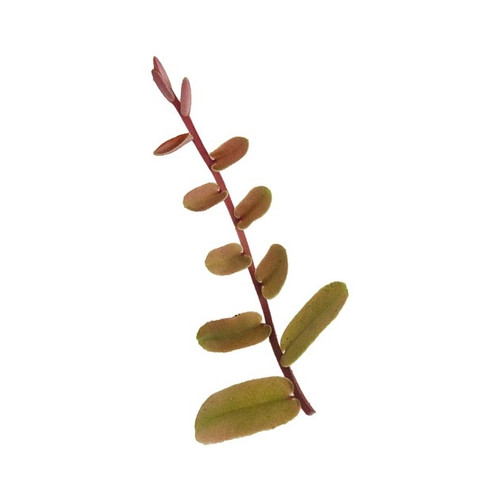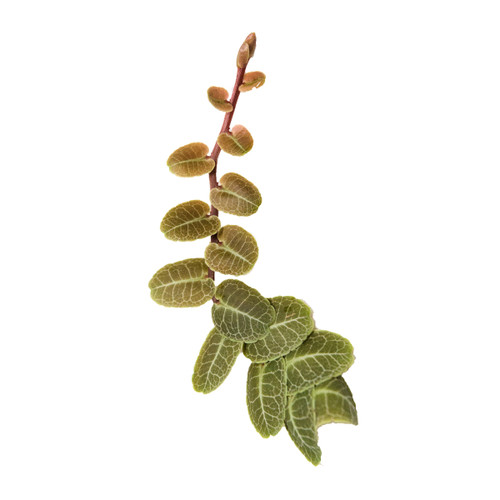Species: Marcgravia sintenisii
Common name(s): Shingling Vine, Marcgravia
Native to: Puerto Rico
Temperature preferences: Warm growing
Water preferences: Medium moisture
Terrestrial or Epiphytic: Terrestrial
General Information and Care: Marcgravia sintenisii, also known as the Rainbow Marcgravia is the most colorful species that Glass Box Tropicals offers. The new growth is bright red when it first emerges and as it matures it changes colors several times before turning a beautiful dark green as it matures. The pictures show the range of colors that are commonly seen in terrarium conditions. Several of the pictures are in situ to give the best idea of what it can look like when grown in a terrarium! This is truly one of the most vivid species that you can grow!
As with all of the other Marcgravias that Glass Box Tropicals offers, this is considered to be a shingling type of plant. Shingling plants are vines that are prone to climb up towards the light. The leaves, many times, almost appear to form themselves to the surface that they are growing on. This is true whether it is your background or a piece of driftwood. Also, it should be noted that no Marcgravias seem to like water sitting on their leaves for long periods of time.
Marcgravias are found throughout Central and South America, as well as in the Caribbean. In their natural habitat, they are typically found growing up tree trunks in the rainforest. Before flowering, Marcgravias send out lateral branches with mature foliage (mature foliage differs from the typical foliage customers will see in their terrarium and in the pictures provided). It is these lateral branches that the plant will then bloom from.
Glass Box Tropicals Plant Care Rating: 7
Shipped Size: 6-8 leaf tip cutting. Should be rooted in moist long fiber sphagnum moss.
1 Review
-
Sintenisii
Nice big specimen has already established in the enclosure









